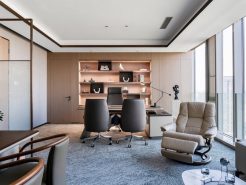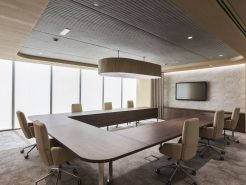In June 2016, Bill G. B. Pallot and Charles Hooreman, rival antiques dealers in Paris, became the two most famous men in the French art world.
That was when Pallot admitted to the police that he had masterminded the forgery of at least four chairs purportedly built in the 18th century for France’s royal household and, in a series of transactions via third parties between 2009 and 2015, sold them to the Palace of Versailles. For decades, Pallot, who ran the furniture division of the Parisian gallery Didier Aaron, had enjoyed a reputation as the world’s leading expert on the works of 18th-century France; indeed, Versailles’s decision to purchase the chairs hinged on Pallot’s blessing. And based on Pallot’s imprimatur, the government classified two of his fake lots as national treasures.
Then there’s Hooreman, our hero—whistle-blower, upstart, purist, scold. At 41 he remains saddled with a hand-to-mouth existence, working solo from a ground-floor atelier in an elegant apartment building he’s constantly declaring himself unable to afford. It’s in the Eighth Arrondissement, the same neighborhood where he was raised and where Pallot and the leading furniture galleries, along Rue du Faubourg St.~Honoré, reside, but a world away if you’re measuring by hours spent waiting for the phone to ring. “I’m seen as the baddie here, for reasons I don’t understand,” he says. Even those on Hooreman’s side in the case—defrauded parties and people with reputations imperiled by Pallot’s dishonest acts—can sound ungrateful. “Nobody trusts Charles, because he’s too much,” says François-Joseph Graf, a decorator in Paris whose clients are among the world’s biggest collectors and who has collaborated with Hooreman to try to unravel the extent of Pallot’s deceptions. “He’s too direct, at such volume. He doesn’t know how to speak in a way that’s not crude.”
Hooreman spends a lot of time thinking about Pallot, wondering when he’ll run into him, and inquiring through mutual acquaintances about public sightings of him. “Bill probably wants to punch me in the face, I’ll bet,” he says. “I put him in jail. But if you meet him, tell him I will always like him.” Pallot, for his part, is dismissive of Hooreman. “He’s very clever, but nobody knew of him before this affair,” he says. Still, he concedes, “Charles loves armchairs.”
There are many people for whom the ornately carved and richly upholstered furniture made for the French royal palaces between 1680 and 1790—a span that encompasses the Enlightenment, rococo, and neoclassical periods and the reigns of Louis XIV, XV, and XVI—represents a high point of Western culture. The designer Patrick Hourcade has called it “the period when furniture became art for the first time.” Leon Dalva, a prominent New York dealer in French antiques, describes the era’s output as “the finest expression on earth of natural materials and man-made artistry.” In the preface to Pallot’s book, Karl Lagerfeld, an early mentor and prominent collector, wrote, “With the exception of Watteau, Fragonard, Chardin, and a few others, the language of these craftsmen was almost more universal than the language of French painters of the same period.”
After the Revolution, however, as graceful lines gave way to the martial taste of Napoleon’s Empire period, and labor-intensive techniques were lost to the industrial age, the furniture itself dispersed. In 1793, the meticulously documented contents of Versailles went up for sale at an auction that lasted two years. The largest quantities were purchased by British aristocrats for their country houses, but much of it also wound up in Italy, Germany, Russia, and the great family collections of the United States (such as the Gettys’, now housed in its own museum, and the Wrightsmans’, which now constitutes a major wing at the Met). “For Americans, it was a way of acquiring class and establishing refinement,” says Marella Rossi Mosseri, a former director of the Parisian gallery Aveline. “It was a stop on the grand tour. Families brought their decorators.” That market thrived more or less until the end of the 20th century but contracted recently, hurt by both the financial crisis and the late-era vogue for contemporary art, which, the thinking goes, doesn’t match with such “fussy” objects.









